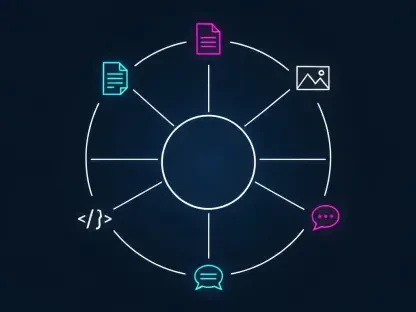In the sprawling arena of robotics, where efficiency and precision are paramount, finding the right software package quickly is crucial. Until recently, locating the correct Robot Operating System (ROS) package felt akin to searching for a needle in a haystack, with developers juggling thousands of options. However, with the introduction of the ROS Package Search Tool, a groundbreaking shift is underway. Created by renowned institutions, this tool promises to surpass traditional search methods by boasting a 21% increase in accuracy, signaling a significant advancement for robotics developers.
Evolutionary Leap in Search Technology
Foremost is the integration of a knowledge graph, which redefines search paradigms from keyword-centric to semantic-driven. This graph functions as a dynamically organized repository, tagging each ROS package with tailored attributes such as compatible robots and functionality. By aligning search parameters with user-specific queries, it augments search accuracy and minimizes time spent on trial and error, thereby catalyzing productivity in robotics development.
Another key attribute of this tool is its specialized semantic language model, adept at comprehending robotics-specific terminology. This model elevates search experiences by contextualizing queries beyond mere keyword matching, thus addressing the unique lexicon of robotics. By understanding intricate industry-specific language, the tool ensures users receive pertinent results, minimizing disconnection between search intent and output.
The precise linking of packages to their attributes is achieved through an attribute mapping system, enabling unparalleled precision. This system is pivotal for user efficiency, facilitating seamless package selection. It streamlines processes, reduces errors linked with compatibility issues, and ultimately supports a smoother development pipeline.
Innovations and Emerging Trends
Recent innovations indicate a robust shift toward semantic-driven search technologies that enhance the ROS Package Search Tool. The trend is evident as these technologies transcend conventional keyword searches, providing a more contextualized understanding of input. Such innovations provide developers with sophisticated functionalities to meet nuanced demands, reflecting ever-evolving needs in the robotics field.
Across various industries, from warehouse automation to healthcare, the ROS Package Search Tool is making its mark. For instance, in warehouse settings, it aids in the swift integration of new technologies, ensuring operational continuity. Healthcare applications benefit from its ability to rapidly source functional packages, supporting critical medical robotics. Beyond streamlining standard operations, its applicability in cutting-edge robotics projects underscores its versatility.
Overcoming Challenges and Expanding Frontiers
Despite its advantages, widespread adoption of the tool is not without its roadblocks. Technical challenges, such as maintaining the robustness of the knowledge graph, remain a focus area. Further, navigating the regulatory landscapes across different regions poses obstacles, demanding strategic compliance measures.
Looking ahead, the future holds promising avenues for the ROS Package Search Tool. Envisioned developments include advancing the tool’s semantic capabilities and expanding its repository to accommodate emerging technologies. These steps are expected to enhance its long-term impact on robotics and software infrastructure, making it a cornerstone of modern robotics development.
Reflective Insights and Perspectives
Reflectively assessing the ROS Package Search Tool reveals its transformative impact on robotics development. This evaluation underscores the tool’s pivotal role in streamlining and enhancing efficiency. Its embrace of semantic orientation fosters a leap in search accuracy, addressing a necessity long felt in the robotics sector. By facilitating direct access to the right resources, it has crucially advanced the field. This advancement signifies the growing importance of investing in intelligent search infrastructures, supporting the rapid evolution of robotics technologies.









